Say farewell to cold spots in your home and hello to cosy comfort, with my handpicked selection of energy-efficient and eco-friendly alternative options to the common radiator, heating systems and heat sourcing.
From cutting-edge heat pumps and underfloor heating to sleek infrared panels and a solar-powered heating system, discover alternative ways to up your heating game and save money.
Disclaimer: As an Amazon, Awin and Wayfair associate, we do receive a small commission from qualifying purchases made via links within this article.
Alternatives to Radiators
Here is my comprehensive rundown of heating source and radiator alternatives to achieve a more cost-effective and efficient future for your home.
Electric Baseboard Heaters
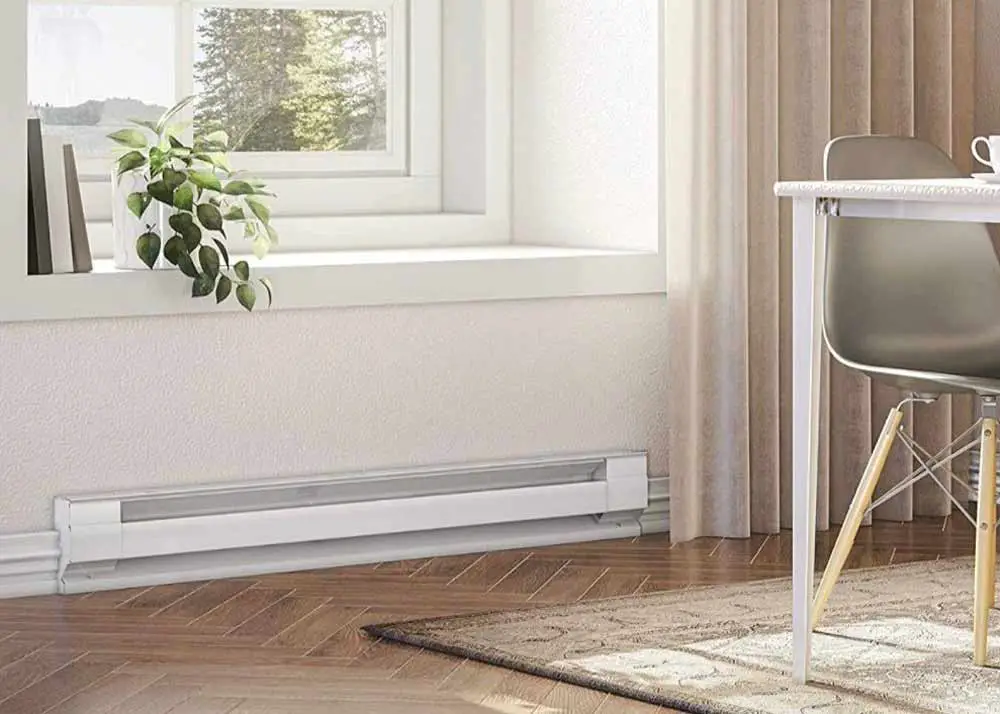
Image credit: katoelectrical.com
Electric baseboard heaters are a heating alternative that is commonly used in residential and commercial spaces. These heaters are typically installed along the baseboard of walls and operate using electricity.
The mechanism of electric baseboard heaters involves a heating element, usually made of metal, which heats up when an electric current passes through it. As the element warms up, it radiates heat into the room, warming the surrounding air. The heaters do not rely on forced air or ductwork, making them a quiet and efficient option for room-specific heating.
Electric baseboard heaters are also equipped with a thermostat that allows the user to control the temperature, ensuring a continuous warm and comfortable environment.
Infrared Heating Panels
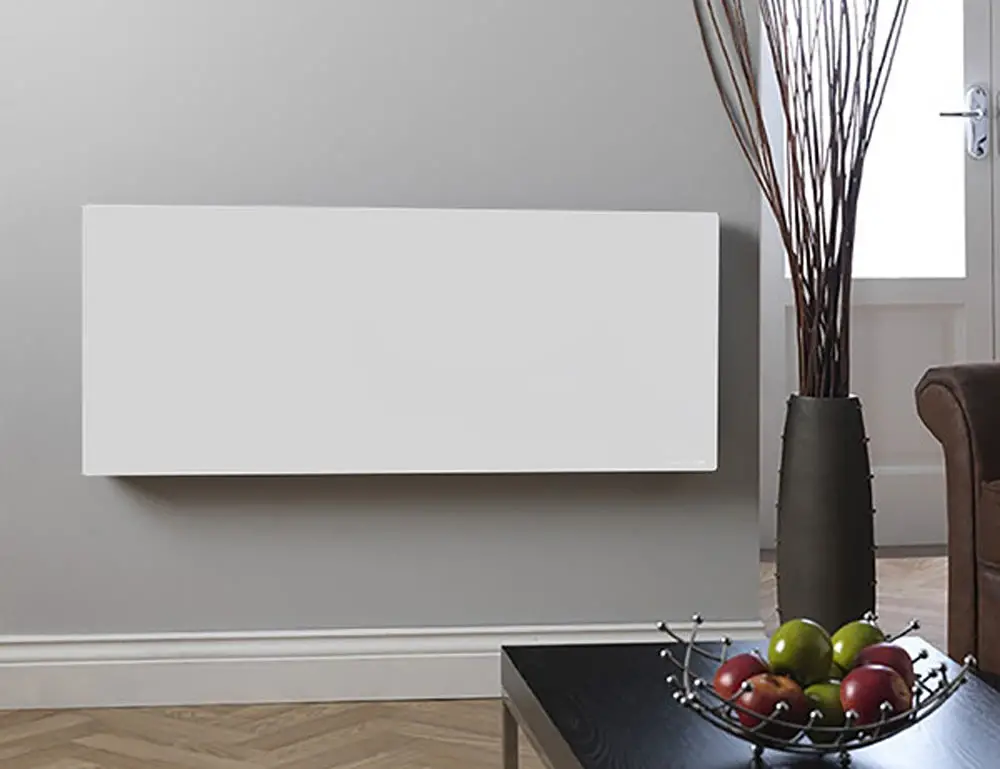
Image credit: bathroomradiatorsuk.com
Infrared heating panels deliver targeted heat to objects and the people around them, making them energy-efficient and cost-effective.
Infrared heating panels emit infrared radiation that warms objects and surfaces directly, rather than heating the air in a room. This direct heating method ensures minimal heat loss, making infrared panels highly efficient and effective.
They are also easy to install and can be mounted on walls or ceilings, adding an additional aesthetic touch to your living spaces.
Underfloor Heating
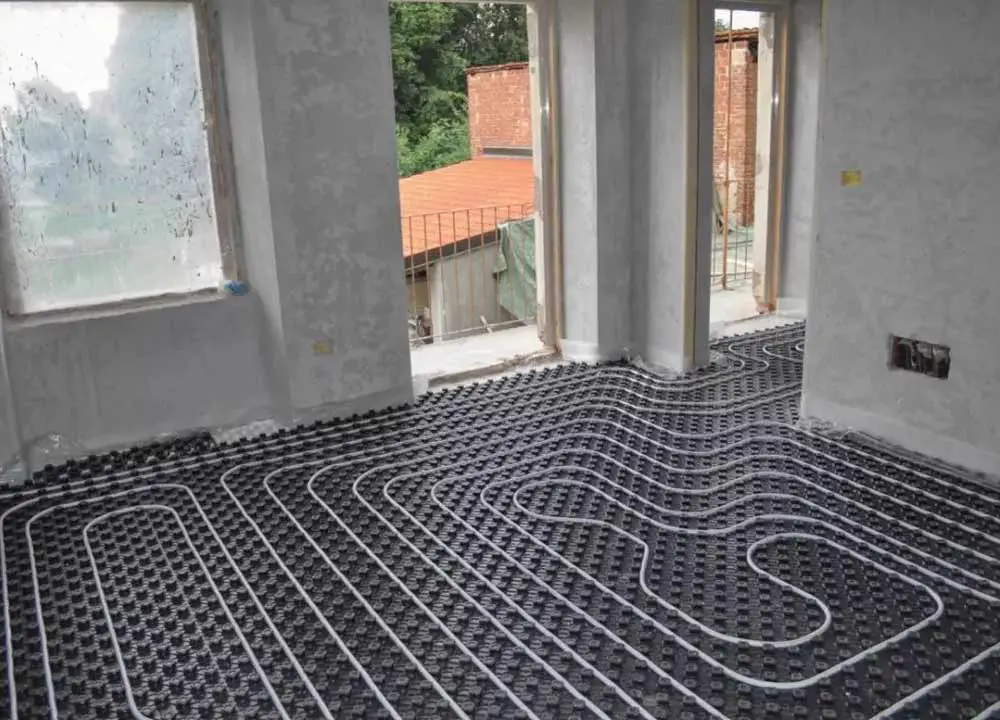
Image credit: wundagroup.com
Underfloor heating systems are available in two main types, electric and water-based. Electric under-floor heating uses electrical cables or heating mats beneath your floor to provide the emitted warmth. They have many benefits to alternative ways of heating, not least the valuable wall space that is saved.
Electric underfloor heating also offers zonal heat, allowing you to control the temperature of different areas in your home. You can adjust the settings to only warm specific rooms, giving you flexibility and control over your heating preferences. Plus, with no need for a boiler or pipes, electric underfloor heating offers a simpler installation process.
Also known as hydronic underfloor heating, water-based underfloor heating works by circulating warm water through a network of pipes beneath the floor. While it might require more effort during the installation process, it's a great choice for larger spaces and can be integrated into your existing heating system.
Electric Heaters
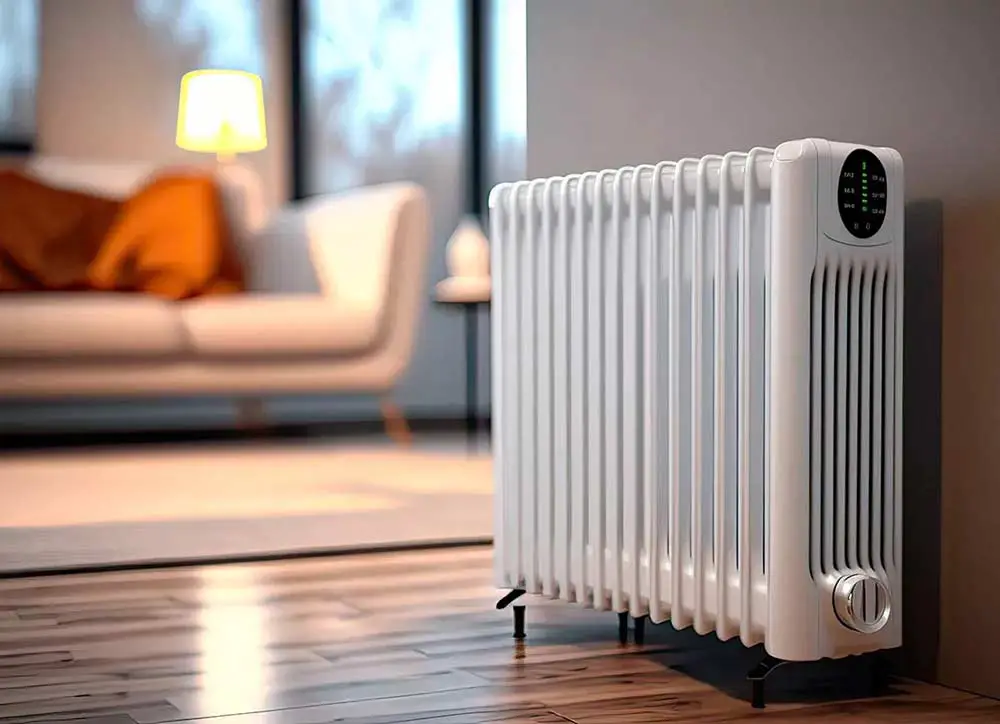
Image credit: hocmarketing.org
Electric heaters are designed to be floor-standing or mounted directly onto the wall. These heaters are equipped with heating elements and are varied in design, size and heating method:
- Electric Radiators: These are wall-mounted heaters that operate using electricity and provide targeted heating for specific rooms or areas.
- Electric Fan Heaters: Fan heaters use an electric heating element to warm the air, and a fan distributes the heated air throughout the room quickly.
- Electric Convection Heaters: Convection heaters work by heating the air, which then rises, creating a natural convection current that spreads warmth throughout the room.
- Electric Oil-Filled Radiators: These heaters contain oil that is heated using an electric element, and the warm oil radiates heat into the surrounding space.
- Electric Panel Heaters: Panel heaters are slim and typically wall-mounted, providing efficient and low-profile heating.
- Electric Towel Rails: These heaters are designed for bathrooms and provide warmth while also drying towels.
- Halogen Heaters: Halogen heaters use halogen bulbs to generate heat, and they can warm up quickly.
- Ceramic Heaters: Ceramic heaters have heating elements coated in ceramic, providing safe and efficient heat output.
Energy-Efficient Heating Systems
When it comes to heating, efficiency is the key to success. Opting for modern, energy-efficient heating alternatives not only keeps your home warm but also saves you money on energy bills in the long run. It's a win-win for you and the planet!
Air Source Heat Pumps
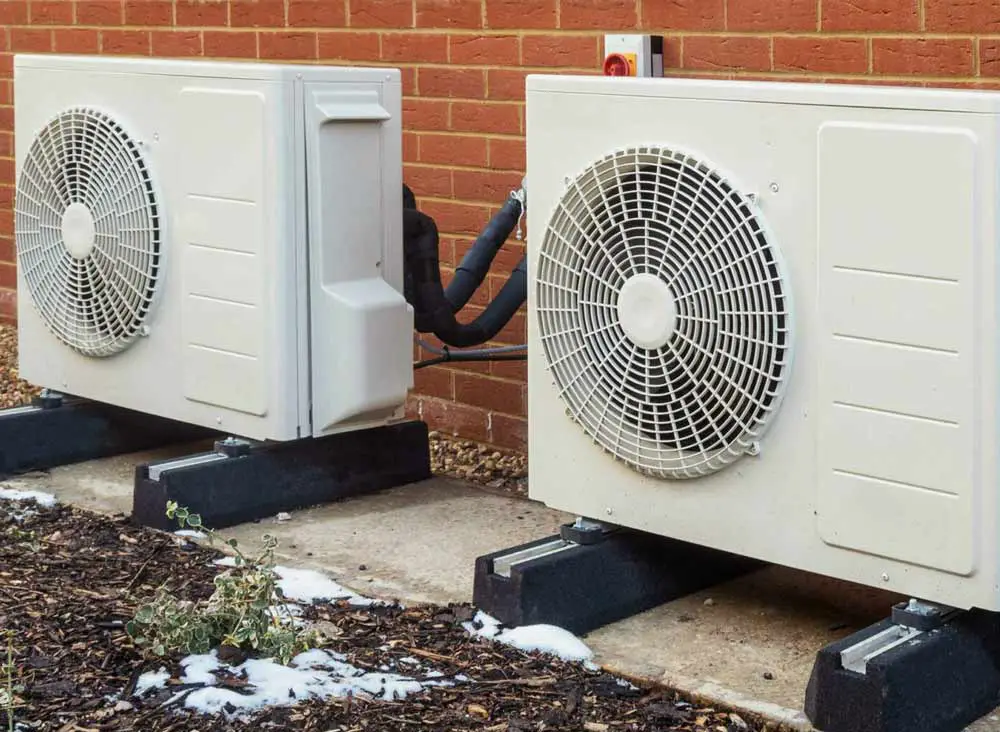
Image credit: fischerfutureheat.com
Air source heat pumps are the way to go if you want to harness the power of the atmosphere. Efficiently extracting heat from the air, these pumps keep you comfortable all year round, especially in more moderate climates.
Air source heat pumps work like a refrigerator in reverse, extracting natural heat from the outside air and transferring it into your home. This process is highly efficient, as it uses only a small amount of electricity to move heat rather than generating it directly. The result? A cost-effective and environmentally-friendly heating solution for your home.
Ground Source Heat Pumps
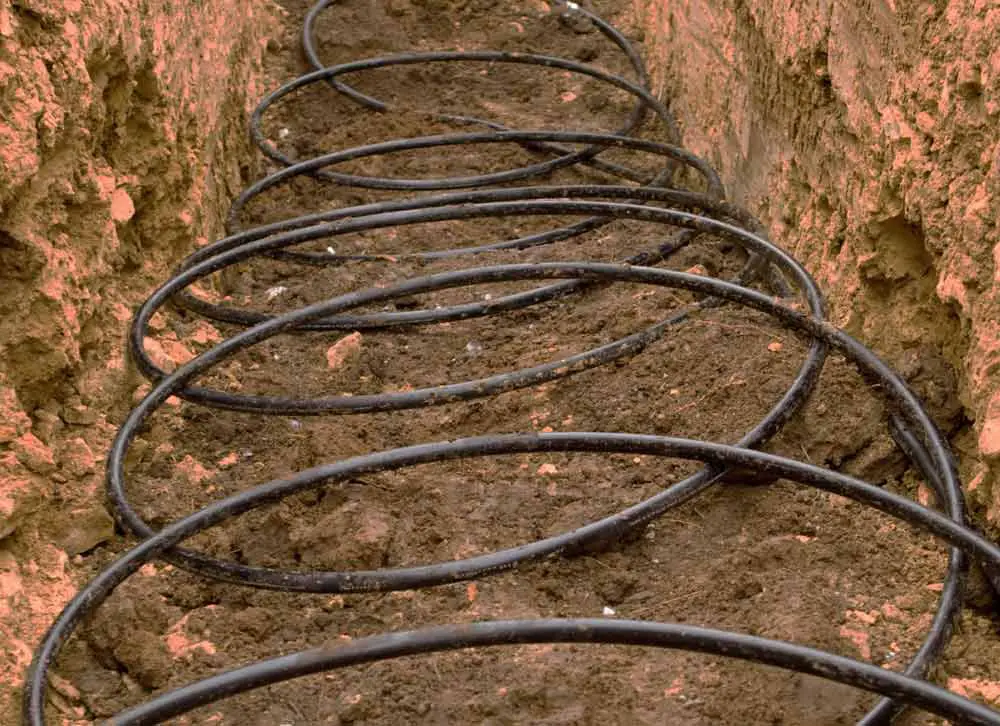
Image credit: efficiencymb.ca
Ground source heat pumps, also known as geothermal heating systems, are a highly efficient and eco-friendly heating and cooling solution. They utilise the stable temperature of the ground to provide warmth during winter and cooling during summer.
The system consists of a ground loop, typically buried underground, containing a water-based solution. This loop absorbs heat from the earth, which remains at a relatively constant temperature, and transfers it to a heat pump within the building.
The heat pump then concentrates the extracted heat to a higher temperature suitable for heating indoor spaces. In the summer, the process can be reversed to cool the building by transferring heat from the interior to the ground.
Ground source heat pumps offer significant energy savings and contribute to reducing greenhouse gas emissions, making them an environmentally friendly alternative to traditional heating and cooling methods.
Solar Panels

Image credit: greenhomesystems.co.uk
As far as renewable heat sources are concerned, solar panels are a fantastic option for sourcing energy. Not only can they generate electricity, but some systems also offer solar water heating.
Solar panels use photovoltaic cells to convert sunlight into electricity, providing you with a renewable and sustainable energy source. Some solar systems are designed to also heat water for domestic use, further increasing savings on your energy bills.
By harnessing solar power, you're reducing your reliance on non-renewable resources and contributing to a greener future. Be aware that solar panels require regular cleaning and maintenance to continue to offer optimal performance.
Central Heating Systems
When choosing a central heating system, consider factors such as the size of your home, the number of rooms you need to heat, and your budget.
A well-designed and properly sized central heating system will not only keep your home warm and cosy but also be more energy-efficient, saving you money.
Affiliate Link
Condensing Boilers
One popular energy-efficient heating method is the condensing boiler. Unlike traditional boilers that release hot gases into the atmosphere, condensing boilers extract additional heat from these gases before they escape, making them more efficient.
They also use less fuel, reducing your carbon footprint. Additionally, some condensing boilers can be combined with solar panels for even greater energy savings.
Gas and Oil Boilers
While not the most energy-efficient, gas and oil boilers still do the job effectively. Sometimes you can't beat the tried and tested options!
Gas boilers work by burning natural gas to produce heat. They are widely available and provide instant warmth, making them a reliable option. Gas boilers are known for their quick response time, providing you with hot water and heating almost instantly.
Oil boilers, on the other hand, use the heating of oil to generate heat. While they require a storage tank, they can be a practical choice in areas without access to a gas supply.
Biomass Boilers
An alternative to gas or oil boilers is the biomass boiler, which uses organic materials like wood pellets or logs to generate heat.
Biomass is considered a carbon-neutral fuel source because the carbon dioxide released during combustion is roughly equal to the carbon dioxide absorbed during the growth of the biomass. It's an eco-friendly and renewable option for eco-conscious homeowners.
Hot Water on Demand
Who doesn't love a nice, hot shower? Make sure you've got a reliable hot water supply and system in place, whether it's tied to a boiler, heat pump, or any other alternative.
Hot water cylinders and storage tanks are commonly used to store and distribute hot water throughout your home. These systems ensure that you have a readily available supply of hot water for all your daily needs, from showering and washing dishes to doing laundry. With hot water on demand, you can bid farewell to cold showers!
My Final Thoughts
I hope that you found my comprehensive rundown of alternatives to standard radiators, and the improvements available for sourcing and distributing the heat required useful and informative.
Whether you're all about eco-friendly solutions, simply crave toasty underfloor warmth, or prefer to stick with classic central heating methods, the options are there to consider.
Frequently Asked Questions (FAQs)
Are infrared heating panels an energy-efficient alternative?
Yes, Infrared heating panels are an energy-efficient alternative to other heating methods. They emit warmth directly to objects and people, making them highly energy-efficient and cost-effective.
By heating objects and surfaces directly, infrared panels minimise heat loss, ensuring every bit of energy is put to good use.
How much more efficient is underfloor heating compared to traditional radiators?
Underfloor heating is around five times more efficient than traditional radiators, ensuring even heat distribution throughout your space. With underfloor heating, you can enjoy consistent warmth without worrying about cold spots or uneven temperature zones.
Are gas boilers still a reliable choice for heating?
Yes, gas boilers continue to be a reliable option for heating, though there are more energy-efficient alternatives now available.
Gas boilers offer quick and efficient heating, making them a popular choice for many homeowners. However, it's worth considering newer options to improve energy efficiency and reduce environmental impact.
Can solar panels be used for both electricity and heating water?
Yes, some solar panel systems can generate electricity and also provide water heating, maximising your green energy usage.
Solar panels use sunlight to generate electricity, while solar water heating systems use the sun's energy to heat water, providing you with two eco-friendly solutions in one package.
Do air source heat pumps work well in all climates?
Air source heat pumps work best in moderate climates, where they efficiently extract heat from the air to keep your home cosy year-round.
In colder climates, air-source heat pumps may still be effective but might require a supplementary heating source during extreme cold temperatures. Always consult with a professional to determine the best solution for your specific climate and heating needs.



 Author: Matthew Chiappini
Author: Matthew Chiappini